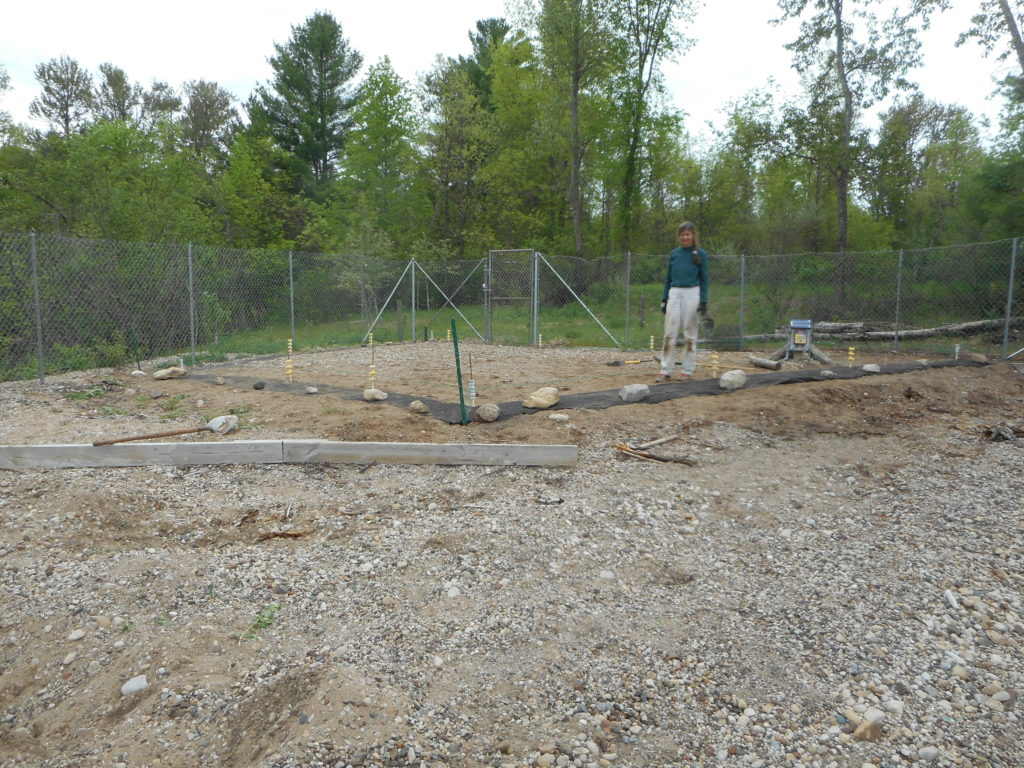2024 | 2023 | 2022 | 2021 | 2020 |
HIGHLIGHTS FOR 2020
ORNATE BOX TURTLE HABITAT RESTORATION

2020 was an unusually good year for us as the pandemic created more time for us to work outdoors. We continued our work thinning Black Oak trees on the west side of our 76-acre unit from February through March and again from October until the end of the year. We worked at the sites on 64 days, 25 more days than our work there in 2019, and we logged 421 donated hours at the site.
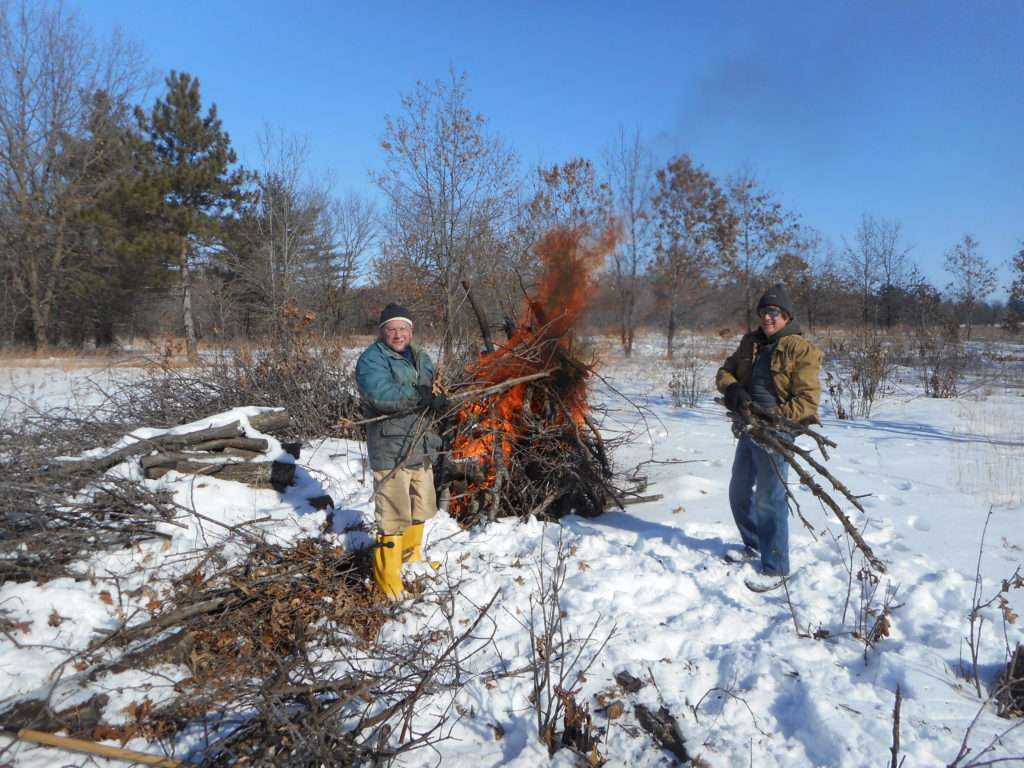
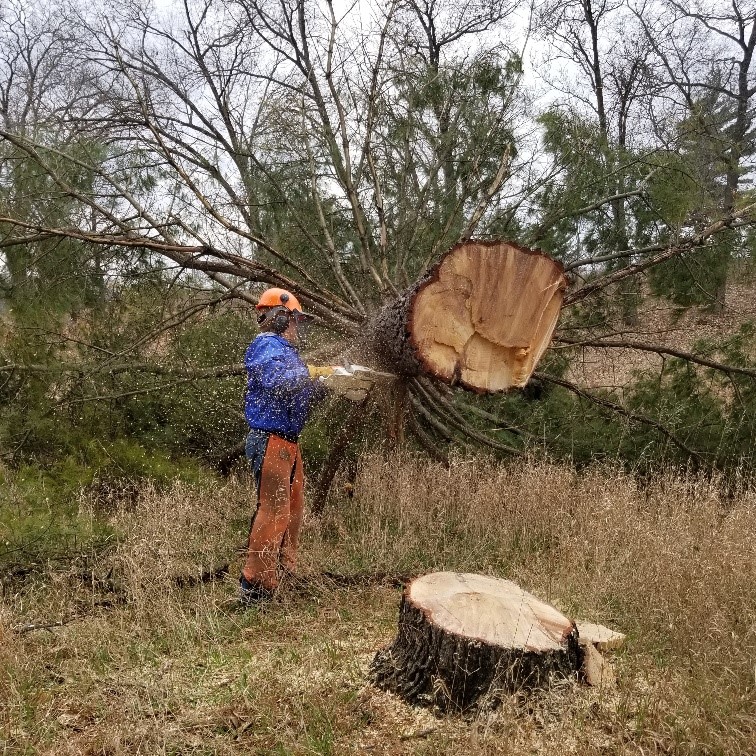
We continued our exotic species control as usual from mid-spring through early fall. During April and May, we worked to set back a couple of relatively new species, Japanese Hedge Parsley (Torilis japonica) and Garlic Mustard (Alliaria petiolate), which occur just outside of the State Natural Area, in hopes of reducing the chance of these species to impact the site. We also worked to eradicate Spotted Knapweed (Centaurea maculosa) from within the site. These species will be managed annually as needed.
We continued our efforts to thin two major Sumac (Rhus spp.) clones in 2020. However, we used a different control method that we expect will have a greater impact on this native but invasive tree. We again experienced re-sprouting of the two clones that we cut and treated in 2018 and cut for a second time in 2019. The new method we used involved treating the uncut trees by swabbing the lower part of each stem with a solution of 20% Garlon mixed with Bark Oil. This method allows more of the chemical to infiltrate the roots, reducing re-sprouting of the trees in an effort to set back the entire clone. The following photos demonstrate how this impacted the trees from early treatment to death of the earliest treated stems of the clones. We are hopeful that this method will significantly reduce our workload after 2-3 years.
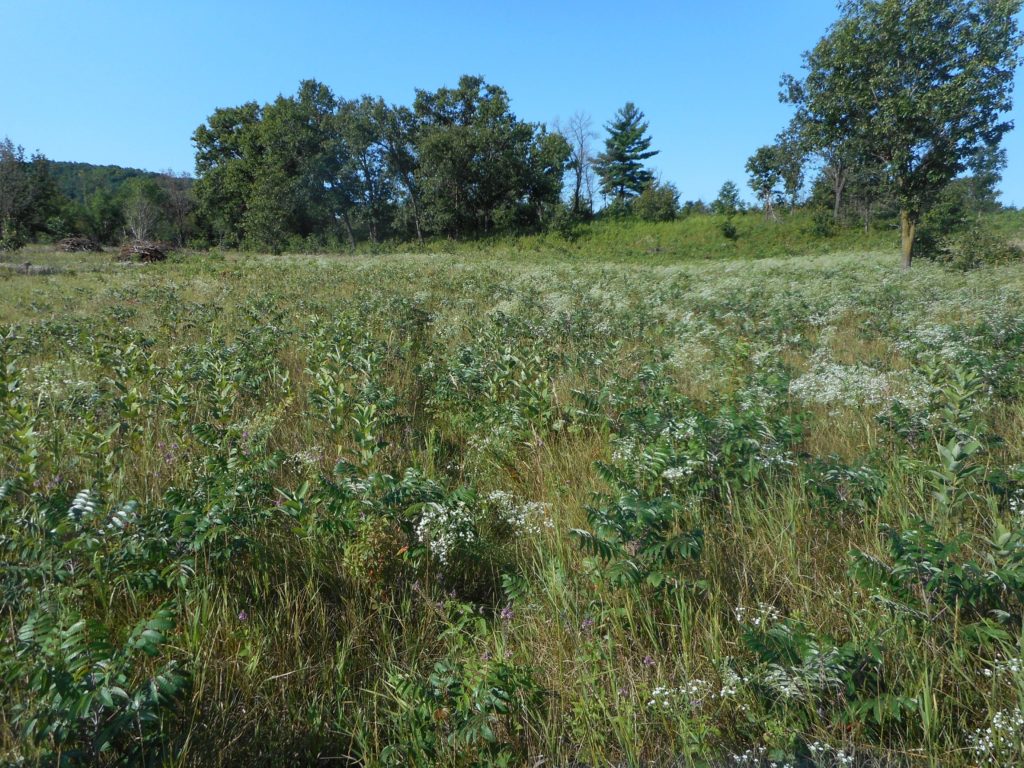

WOOD TURTLES
Nest Site Installations and Predation Results
We installed two new nest boxes in 2020 in Price County just prior to the nesting season. We now have 30 nesting sites across northern Wisconsin, 28 of which are equipped to exclude most of the significant nest predators. Nest predation was the lowest in terms of the number of sites that experienced predation by mammalian predators in 2020.
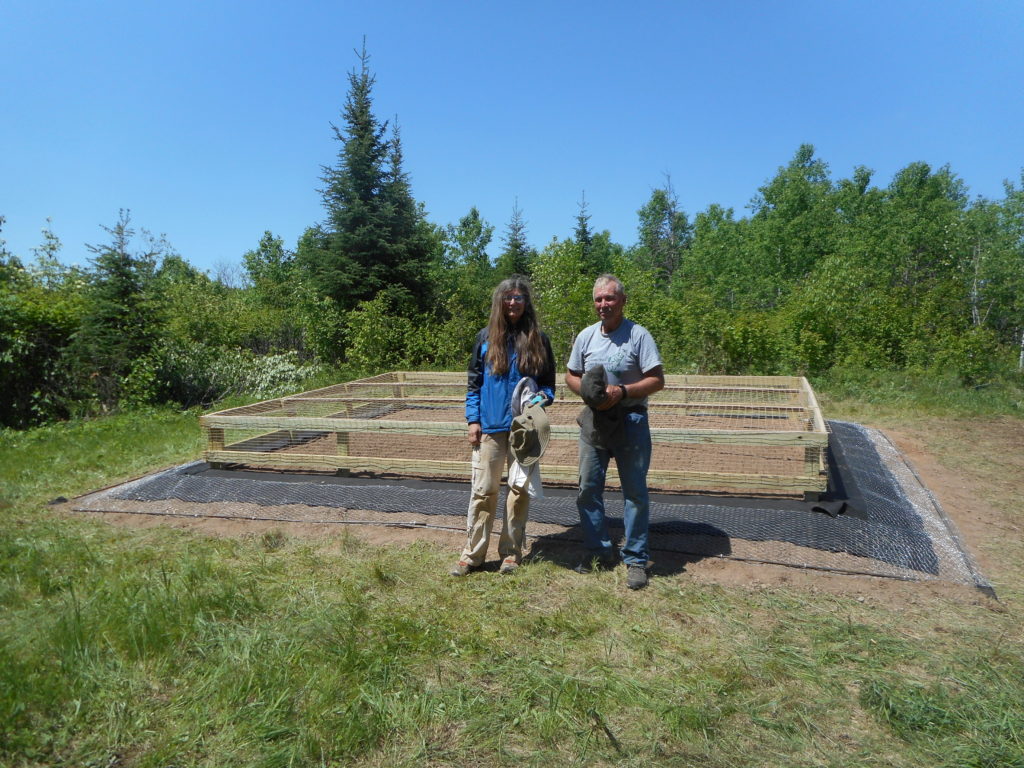
Nesting Success
In 2020 we increased our overall nest monitoring by 5 sites, bringing our total to 19 sites (see PPT and Table below). The results provide further evidence that our work is producing significant nesting success. This success is a combination of adding two more nesting sites in 2020 and experiencing less nest predation on our sites overall. The good news is that we are seeing hatchling numbers increase, which we are hopeful will ultimately lead to increased adult Wood Turtle populations.
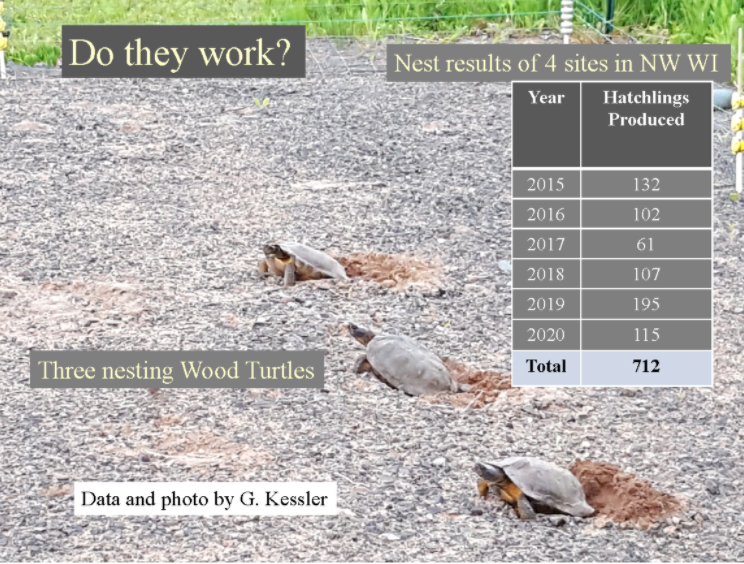
Table- Wood Turtle Hatchling Results for 2020 at 10 sites in NE WI and five sites in NW WI.
| Sites | # Clutches | Total Eggs | # Hatched | #Infertile | Died in Egg |
| 1 | 11 | 94 | 82 | 12 | |
| 2 | 1 | 11 | 8 | 3 | |
| 3* | 1 | 11 | 10 | 1 | |
| 4* | 3 | 44 | 43 | 1 | |
| 5* | 1 | 10 | 5 | 4 | 1 |
| 6 | 0 | 0 | 0 | 0 | 0 |
| 7 | 7 | 69 | 63 | 2 | 4 |
| 8 | 4 | 58 | 45 | 5 | 8 |
| 9 | 0 | 0 | 0 | 0 | 0 |
| 10 | 0 | 0 | 0 | 0 | 0 |
| 11 | 0 | 0 | 0 | 0 | 0 |
| 12 | 2 | 28 | 12 | 11 | 5 |
| 13 | 6 | 56 | 31 | 21 | 4 |
| 14 | 2 | 19 | 17 | 1 | 1 |
| 15 | 8 | 95 | 73 | 14 | 8 |
| Total | 46 | 495 | 389 | 74 | 32 |
*These three sites have typically had significantly higher numbers of nests in previous years.
A Final Effort to Salvage a Valuable Nest Site
Two of our earliest nest sites installed in 2009 and 2012 were within the floodplains of two different rivers. Since then they have both experienced a number of damaging flood events. These events led us to avoid constructing other nest sites within floodplains. One of these sites experienced five significant flood events between 2016 and 2019. We have made repairs following each of these events and repairs have included shrinking the site in hopes of avoiding future flooding. We made temporary repairs to this site in May of 2019 (see the website’s 2019 Wood Turtle Highlights Page). In May of 2020 we made further repairs to improve the site and make it more permanent. This will likely be our last attempt to save the site. The nest site has been very productive for hatching Wood Turtles, so we are planning one last attempt in 2021 to make it “flood proof”.
